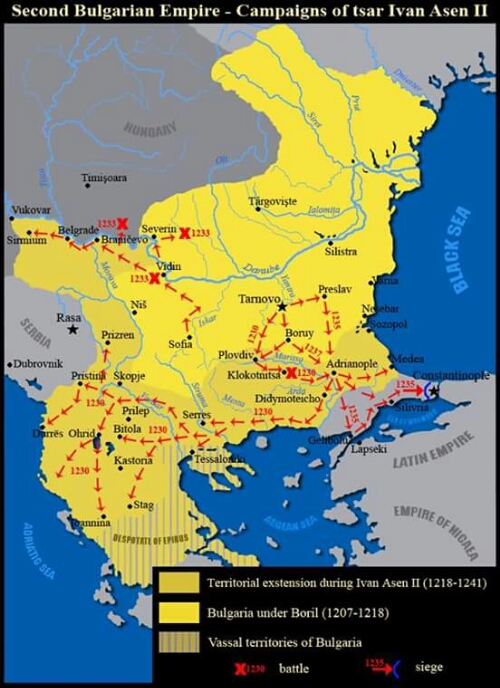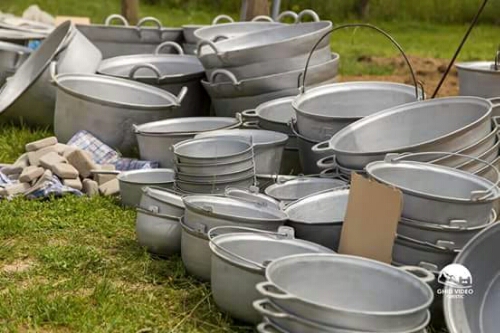Recitesc o carte excelentă, coordonată de istoricul Bogdan Murgescu, respectiv:
“Istoria României în texte”.
Documente inedite, de-a lungul a peste 2500 de ani de istorie…
Răscoala Asăneştilor (1185) — relatarea lui Niketas Choniates
„Împăratul Isaac Anghelos (1185–1195) se căsătoreşte cu fiica regelui Ungariei, Béla al IIIl- lea(1172–1196)…
[…] Dar zgârcindu-se să cheltuiască pentru serbările de nuntă din banii vistieriei, îi adună fără cruţare din propriile ţinuturi; şi a jecmănit, din meschinărie, şi alte oraşe din părţile Anchialosului, pe furiş, dar mai ales şi i-a făcut sieşi şi romeilor duşmani pe barbarii din Muntele Haemus, care mai înainte se numeau misieni, iar acum se cheamă vlahi2.
Aceştia, încredinţaţi de inaccesibilitatea ţinutului în care locuiau şi bizuindu-se pe fortăreţele lor, care sunt şi foarte numeroase şi ridicate pe stânci abrupte, s-au sumeţit şi altădată împotriva romeilor3 […]. şi erau izvoditori ai nenorocirii şi agitatori ai întregului neam, unul Petru şi cu Asan, de acelaşi neam şi obârşie.
Aceştia, ca să nu facă răzvrătirea fără motiv, se înfiinţează împăratului, care se afla în tabără la Kypsela, cerându-i să fie înrolaţi în armată împreună cu romeii şi să li se acorde prin carte împărătească un domeniu cu ceva venit situat pe muntele Haemus4.
Dar cererea lor n-a fost împlinită; căci a biruit voinţa lui Dumnezeu. […] După ce misienii(vlahii) au început să acţioneze făţiş ca nişte răzvrătiţi, începători ai acestei
fărădelegi fiind cei despre care am vorbit, împăratul porneşte împotriva lor.
[…] La început vlahii se codeau şi fugeau de răscoala la care erau împinşi de Petru şi Asan, temându-se de o acţiune atât de însemnată. Încercând să-i elibereze de această teamă pe cei din acelaşi neam cu ei, consângenii construiră un locaş de rugăciune, cu hramul sfântului mucenic Dimitrie5, în care adunară mulţi stăpâniţi de demoni, de ambe sexe, cu ochii injectaţi şi privirile rătăcite, cu părul în dezordine şi care se înfăţişau aidoma celor stăpâniţi de demoni şi în toate celelalte privinţe.
Îi învăţară pe aceşti exaltaţi să spună că Dumnezeu a hotărât libertate pentru neamul bulgarilor şi al vlahilor şi a încuviinţat scuturarea jugului celui îndelung purtat; din care cauză şi Dimitrie, mucenicul lui Hristos, a părăsit cetatea tesalonicienilor şi biserica-i de acolo şi petrecerea lui printre romei şi a venit la ei ca să-i ajute şi să le fie părtaş la fapte […]
Convinşi de asemenea profeţii, neamul întreg ia armele. şi socotind că puţin lucru e propria lor descătuşare şi eliberare, se lăţesc şi spre târgurile şi aşezările mai depărtate de (Munţii)Haemus. Iar unul dintre cei doi fraţi, Petru, îşi încununează capul cu o coroniţă de aur şi-şi meştereşte şi îşi pune în picioare încălţăminte de culoare roşie6.
2 Dovadă a conştiinţei faptului că aromânii(vlahii) din Peninsula Balcanică erau urmaşii vechii populaţii romanizate- (misienii, locuitorii Moesiei).
3 Romei — bizantini.
4 Ei cereau de fapt să primească o pronoia, domeniu feudal, în schimbul căruia ar fi fost datori să presteze serviciul militar.
5 Sfântul Dimitrie era patronul Thessalonicului şi era foarte venerat de bizantini, mai ales pentru miracolele care i se atribuiau în perioada invaziei slave.
6 Încălţămintea roşie şi diadema erau însemne imperiale, deci autorul arată că Petru se proclamă împărat”.
P.S.
Deşi noul stat, întemeiat de vlahi şi de bulgari, a devenit în scurtă vreme un stat totalmente bulgar din diverse considerente, această mişcare îndrăzneaţă a avut ca rezultat instaurarea puterii exemplului, având în centrul ei trei emblematice figuri, a căror naţionalitate reală a devenit ulterior un subiect aprins de discuţie.
Chiar dacă faptele şi mişcările istorice care datează deja de peste 800 de ani au fost în mare parte reconstituite, naţionalitatea răsculaţilor care au instaurat “Cel de-al doilea ţarat bulgar”, aşa cum a ramas în cărţile de istorie, este încă controversată.
În privinţa acestui aspect, istoricii români şi cei bulgari încă nu au reuşit să ajungă la un consens. Cert este că istoricii bulgari contestă originea română a Asăneştilor.
În opinia lor, aceştia ar fi fost bulgari sau chiar cumani, iar titlul pe care îl purta Ioniţă de “Rege al bulgarilor şi al vlahilor” nu ar fi decât varianta modificată de către scribii cancelariei papale, care au înlocuit cuvântul “graecorum” din documentele slave de la Târnovo, în “blachorum”.
Prin urmare, de exemplu Ioniţă Calioan, nu era “Rege al bulgarilor şi al vlahilor”, ci al “bulgarilor şi grecilor”. Pentru că afirmaţiile acestora nu sunt susţinute în ochii istoricilor români, aceştia din urmă consideră că naţionalitatea vlahă a Asăneştilor este mai presus de orice îndoială. Dovezile citate se bazează pe o serie de documente, provenind din surse şi zone geografice diferite.
















































































































